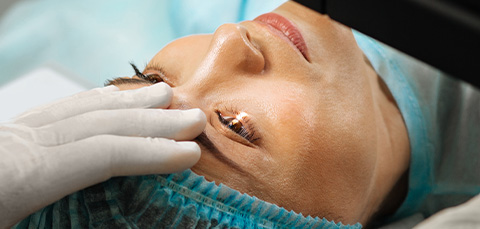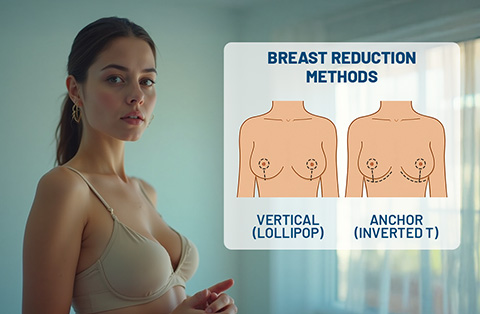Adjusting to vision after cataract surgery can be challenging, but with the right care, exercises, and guidance, you can restore clarity and comfort. Discover how to enhance recovery and optimize your sight.
How Does Cataract Surgery Affect Your Vision?
Cataract surgery removes the cloudy lens in your eye and replaces it with an artificial lens. This procedure can significantly improve vision clarity. Many patients experience better color perception and sharper focus. However, your vision may feel different immediately after surgery.
You might notice glare, halos around lights, or slight blurriness as your eye adjusts to the new lens. These effects are usually temporary and improve as the healing process continues. Adjusting to the artificial lens varies between individuals and may require some time and effort.
Understanding the Surgical Procedure and Outcomes
Cataract surgery is a common and straightforward procedure. It involves removing the eye’s cloudy natural lens and replacing it with a clear, artificial intraocular lens (IOL). The surgery is typically performed under local anesthesia and takes about 15-30 minutes.
Most patients notice clearer vision within a few days after the procedure. However, the exact outcome depends on factors such as the type of IOL used, the health of your eye, and how well your eye heals. Advanced lens options, like multifocal or toric lenses, may also correct presbyopia or astigmatism, offering additional benefits beyond cataract removal.
What to Know About the Healing Process?
The healing process after cataract surgery typically takes a few weeks. During this time, the eye adjusts to the artificial lens, and vision steadily improves. Most patients can resume light activities within a day or two, but full recovery may take about 4-6 weeks.
Your eye may feel slightly irritated or sensitive in the first few days. Symptoms like mild redness, light sensitivity, and watery eyes are common but should gradually subside. Prescription eye drops are essential during recovery to prevent infection and reduce inflammation. Avoid rubbing your eye or engaging in strenuous activities until cleared by your doctor. Regular follow-up appointments help monitor the healing process and address any concerns.
Adjusting to Your New Lens
Adjusting to the artificial lens after cataract surgery is an essential part of recovery. Your brain and eyes work together to adapt to the new way your vision functions. This adjustment period varies from person to person and can take days or weeks.
Some patients may initially experience visual distortions, such as halos around lights or difficulty judging distances. These effects are common and typically diminish as your brain adapts. If you opted for multifocal or toric lenses, it might take longer to get used to their unique visual patterns.
Using your new vision for daily tasks like reading, watching television, and walking helps your eyes adjust naturally. However, if challenges persist, your doctor may recommend glasses or additional therapy or training eyes after cataract surgery to optimize your vision.
How to Retrain Your Eyes Following Cataract Surgery?
Retraining your eyes after cataract surgery involves gradual adjustments and exercises to help restore comfortable and efficient vision. This process focuses on enhancing coordination, depth perception, and overall visual function.
Here are steps to retrain your eyes:
Gradual Exposure to Light:
Spend time in natural light to help your eyes adapt, but avoid bright sunlight initially. Use sunglasses outdoors for protection.Focus Exercises:
Practice focusing on objects at varying distances. This helps train your eyes to shift focus smoothly, especially if you have a multifocal lens.Reading Practice:
Start with large print materials and gradually move to smaller text. This aids adaptation to near vision.Eye Movement Exercises:
Move your eyes side-to-side, up and down, and diagonally to improve coordination and flexibility.Rest and Breaks:
Follow the 20-20-20 rule when using screens—look 20 feet away for 20 seconds every 20 minutes to reduce strain.
Consistency in these practices helps improve vision and speeds up the adjustment process. If difficulties persist, consult your doctor for personalized guidance or vision therapy.
Effective Eye Exercises for Clear Vision
Eye exercises can support visual clarity and comfort after cataract surgery. While these exercises cannot replace medical treatment, they help improve coordination and focus. Incorporating them into your daily routine can make the adjustment process smoother.
Here are effective eye exercises:
Focus Shifting:
Hold an object, like a pen, at arm’s length. Slowly move it closer to your nose while keeping your eyes focused. Repeat 10 times to strengthen focus ability.Near and Far Focus:
Alternate focusing on a nearby object and one farther away, such as a book and a distant tree. This improves depth perception and flexibility.Figure Eight:
Trace a large figure eight in the air with your eyes. Perform the movement slowly for a few minutes to enhance eye muscle coordination.Blinking Practice:
Blink gently and regularly to keep your eyes lubricated and reduce dryness, which is common after surgery.Palm Relaxation:
Rub your hands together to warm them, then place them over closed eyes for a minute. This reduces strain and promotes relaxation.
Perform these exercises in a comfortable setting, avoiding overexertion. Consistency is key, but always follow your doctor’s recommendations to ensure exercises are safe for your recovery.
Tips to Improve Your Vision After Cataract Surgery
Improving your vision after cataract surgery requires a combination of proper care, lifestyle adjustments, and patience. Here are some tips to support your visual recovery and maximize clarity:
Follow Instructions of Your Eye Surgeon:
Use prescribed eye drops and attend all follow-up appointments to monitor healing progress.Protect Your Eyes:
Wear sunglasses outdoors to shield your eyes from harmful UV rays. Avoid dusty or smoky environments that may cause irritation.Adopt Healthy Habits:
Maintain a balanced diet rich in eye-friendly nutrients, such as omega-3 fatty acids, vitamin C, and lutein. Stay hydrated to support overall eye health.Rest Your Eyes:
Limit screen time and take regular breaks to reduce strain. Avoid activities like heavy lifting or bending over, especially in the early recovery period.Engage in Vision Exercises:
Perform simple eye exercises to strengthen focus and coordination, as advised by your doctor.Wear Appropriate Eyewear:
If recommended, use glasses for reading or other tasks requiring precision.
By incorporating these practices into your daily routine, you can enhance your recovery and enjoy clearer, more comfortable vision.
What to Expect During the Recovery Period?
The recovery period after cataract surgery is typically smooth, with most patients experiencing noticeable improvements in vision within a few days. However, full healing takes several weeks. Knowing what to expect during this time can help you manage your recovery effectively.
Key Aspects of the Recovery Period:
Immediate Post-Surgery Effects:
You may experience mild discomfort, redness, or a gritty sensation in the operated eye. These symptoms are normal and usually subside within a few days.Vision Clarity:
Vision might be blurry initially as your eye adjusts to the new lens. Colors may also appear more vivid due to the removal of the cloudy lens.Light Sensitivity:
Sensitivity to bright lights and glare is common. Wearing sunglasses outdoors can provide relief.Activity Restrictions:
Avoid strenuous activities, heavy lifting, or bending over, as these can increase pressure in the eye. Protect your eye from water and avoid rubbing it.Medication Use:
Use prescribed eye drops as directed to prevent infection and reduce inflammation.Follow-Up Appointments:
Attend all scheduled visits to ensure proper healing and address any concerns promptly.
Most patients return to their normal routine within a week, but complete stabilization of vision can take 4-6 weeks. Adhering to your doctor’s guidance ensures a smooth and successful recovery.
Timeline for Adjusting to Your New Vision
Adjusting to your new vision after cataract surgery is a gradual process. While many patients notice significant improvements quickly, the full adaptation can take weeks. Here is a general timeline to help you understand what to expect:
First Few Days:
Vision may be blurry as your eye heals and adjusts to the artificial lens. Colors appear brighter, but you may notice glare or halos around lights. Mild discomfort is common.One Week:
Most symptoms, such as light sensitivity and redness, begin to subside. Vision clarity improves, though adjustments to focus may still be ongoing.Two to Four Weeks:
Depth perception and visual sharpness continue to enhance. If you have a multifocal or toric lens, adaptation to their unique visual patterns may take additional time.Four to Six Weeks:
Full healing and stabilization of vision typically occur by this point. Most patients feel comfortable resuming all activities, including reading, driving, and other visual tasks.Two to Three Months (if necessary):
For some individuals, the brain may take longer to fully adapt, particularly if there are additional factors like pre-existing eye conditions.
Each person’s experience may vary, but following post-surgical care instructions and attending regular follow-ups ensures optimal recovery and adaptation.





